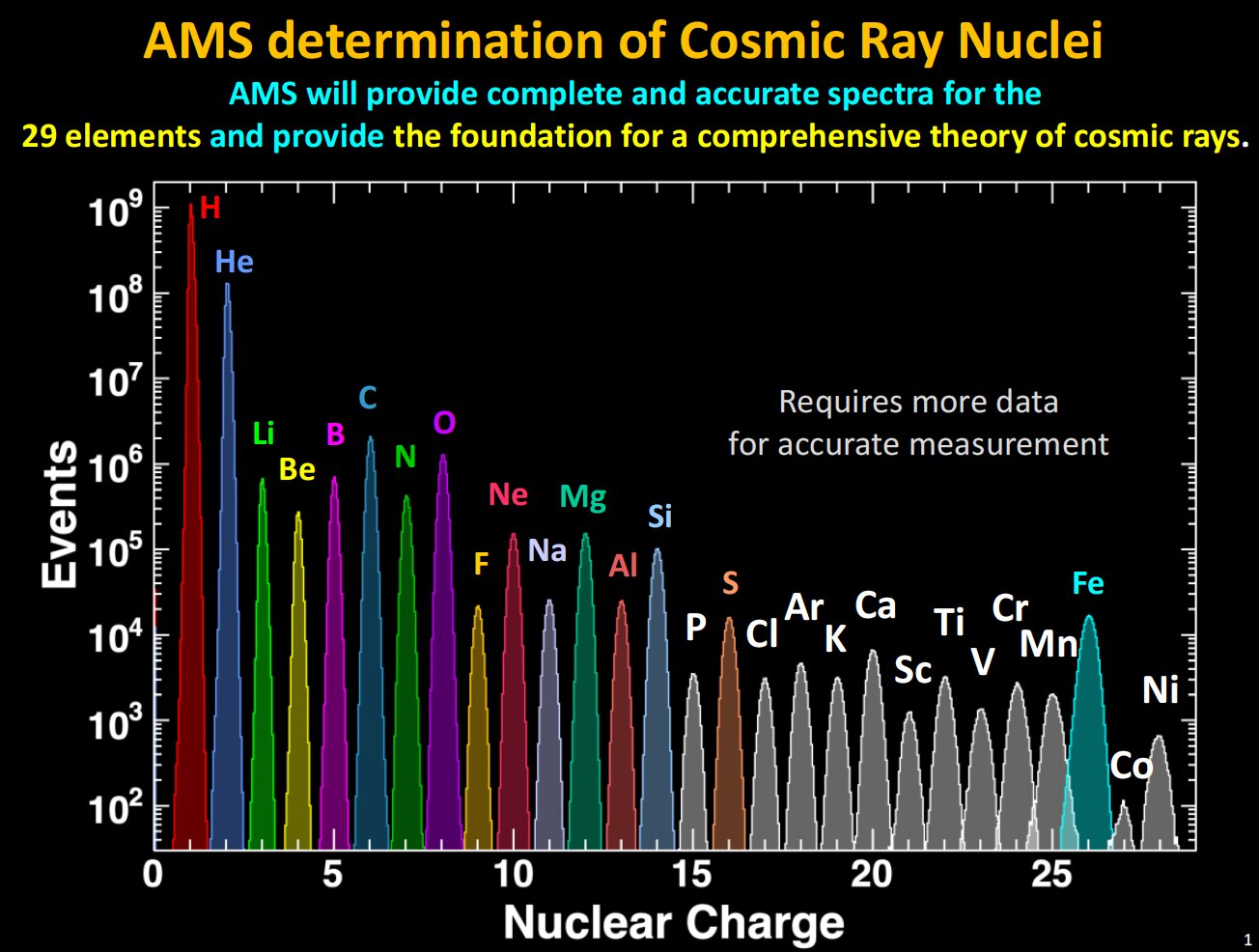Charged cosmic rays, high-energy clusters of particles moving through space, were first described in 1912 by physicist Victor Hess. Since their discovery, they have been the topic of numerous astrophysics studies aimed at better understanding their origin, acceleration and propagation through space, using satellite data or other experimental methods.
The Alpha Magnetic Spectrometer (AMS) collaboration, a large research group analyzing data collected by a large magnetic spectrometer in space, recently gathered new insight about the properties and composition of specific types of cosmic rays. In a new paper, published in Physical Review Letters (PRL), they specifically unveiled the composition of primary cosmic-ray carbon, neon, and magnesium, along with the composition and properties of cosmic-ray sulfur.
“Pioneering experiments studying cosmic rays have typically an error of 30% to 50% and mostly at the kinetic energy below 50 Giga electron-volts per nucleon,” Samuel Ting, spokesperson for the AMS Collaboration, told Phys.org. “These large error measurements provide important information that agrees with many theoretical models. The Alpha Magnetic Spectrometer experiment on the International Space Station provides percent accuracy measurements of elementary particles (electrons, positrons, protons, and antiprotons) and all elements of the periodic table up to kinetic energy of more than 1,000 Giga electron-volts per nucleon.”
Some of the recent measurements collected by the AMS detector have been difficult to explain using existing theoretical physics models. For instance, by measuring the rigidity (i.e., momentum/charge) of all charged particles in the rays, the AMS detector gathered data shedding new light on the properties of two different kinds of charged cosmic rays, which the researchers dubbed primary and secondary rays.
“Primary cosmic rays (e.g., He, C, O, Ne, Mg, Si, S, Fe, …) nuclei are synthesized in stars and accelerated at astrophysical sources like supernovae, and secondary cosmic rays (e.g., Li, Be, B, F, …) nuclei are produced in the interactions of the primary cosmic ray with the interstellar media,” Ting explained. “Our recent work featured in PRL was inspired by our discovery of unique properties of cosmic rays in two previous publications.”
2023-07-07 09:48:04
Original from phys.org
